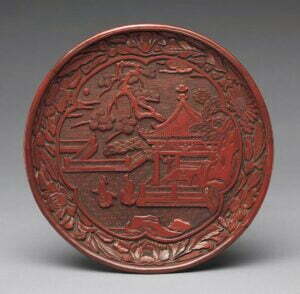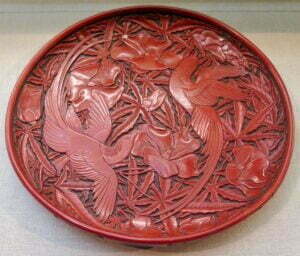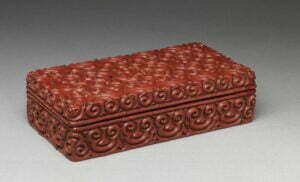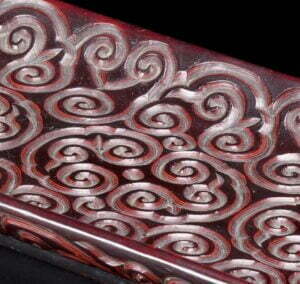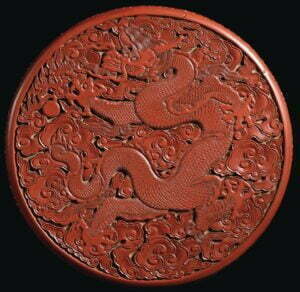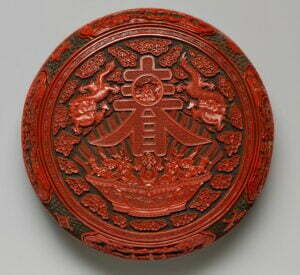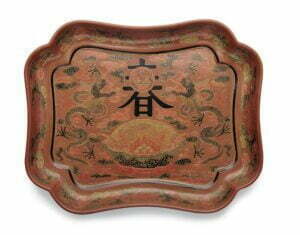Lacquer
Lacquer is an organic material that is made from the excreted sap of the Rhus verniciflua tree. It was first produced in China in the Shang Dynasty (1600–1046 BC) but began appearing in large quantities in the Eastern Zhou Dynasty (771–256 BC).
Lacquer was applied to a wood or metal base in multiple thin layers after each had dried. The conditions for drying were quite unusual in that this took place in conditions of high humidity.
During the Song Dynasty (960-1275 AD) understated floral forms imitating ceramics were developed (Fig L1). Carving through through thick layers of lacquer was also developed at this time and incorporated new designs such as figures in landscapes, (Fig L2) birds on a background of foliage and dragons and phoenix.
Photograph © Sotheby’s.
Photograph © Metropolitan Museum
Photograph © Metropolitan Museum.
These designs were developed in the Yuan Dynasty and the birds and flowers became larger in scale (Fig L3). Abstracted pattern designs known as Tixi developed at this time and involved carving rows of ruyi (Fig L4.). Different colours were often applied in layers, which created an interesting dimension to these designs. (Fig L 5).
The Ming Dynasty (1368-1644) saw a development in decorative designs and shapes. In the Yongle period (1402-1424), boxes carved with flowers and dragons (Fig L6). became popular and a number were inscribed with reign marks. Dishes were continued to be made into the early 15th century, some of which were large and and a few were signed by the maker Zhang Cheng (Fig L7).
Photograph © Metropolitan Museum
Photograph © Bonhams.
Photograph © Sotheby’s.
In the Qing Dynasty (1648-1911) multiple colours were frequently used on pieces, which added an extra level of sophistication to the design (Fig L8).
Qiangjian and Tianqi lacquer techniques were developed in the Song Dynasty (960-1275) and involved incising into the surface of the lacquer and infilling with gold or other coloured lacquers. These techniques are more commonly seen on late Ming and Qing pieces, such as furniture, boxes and dishes (Fig L9).
Photograph © Sotheby’s.
Photograph © Metropolitan Museum
Photograph © Christie’s.

